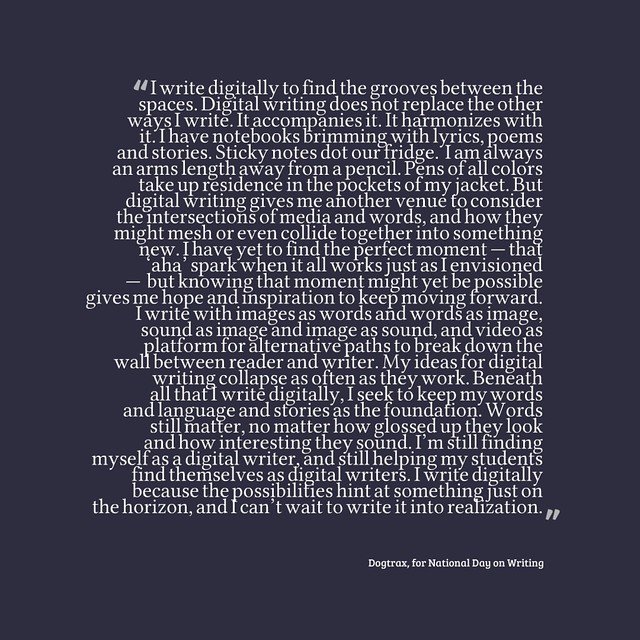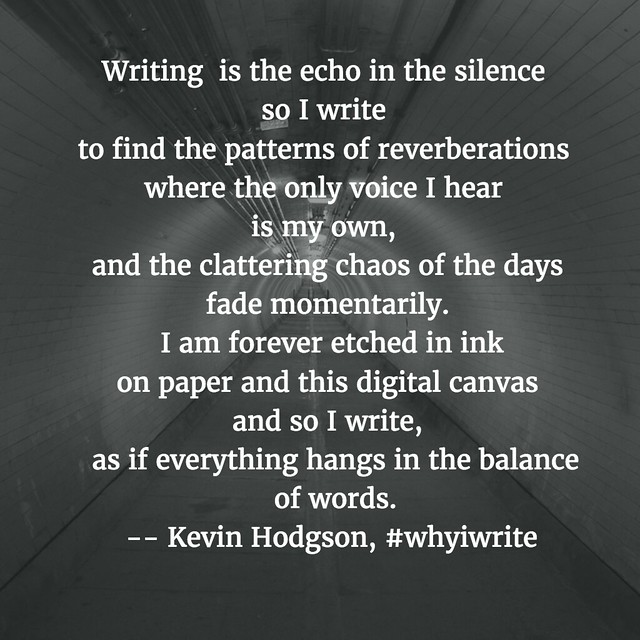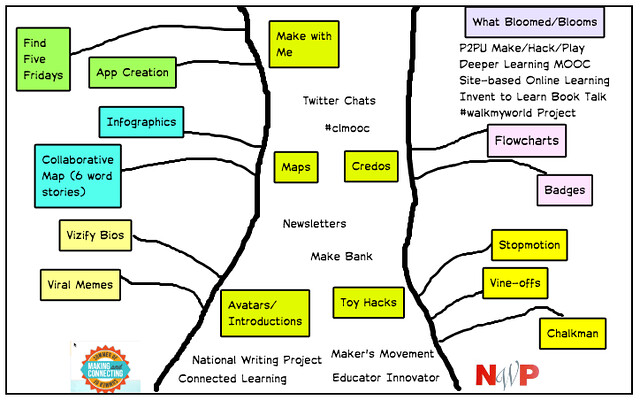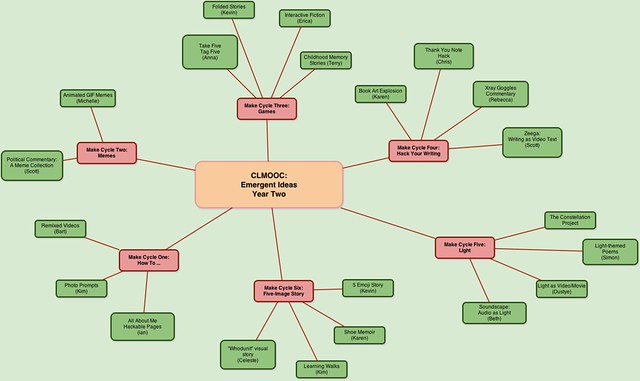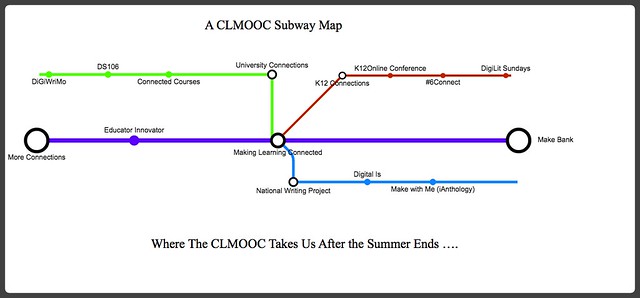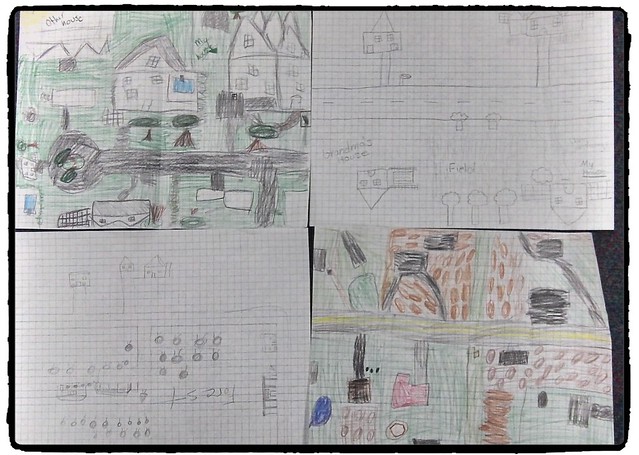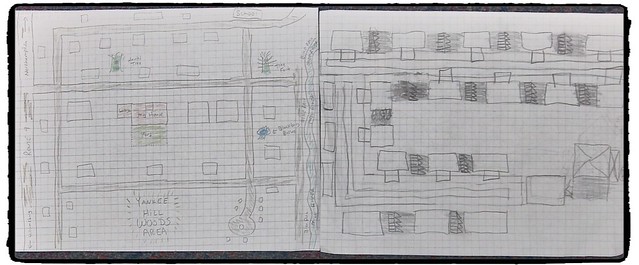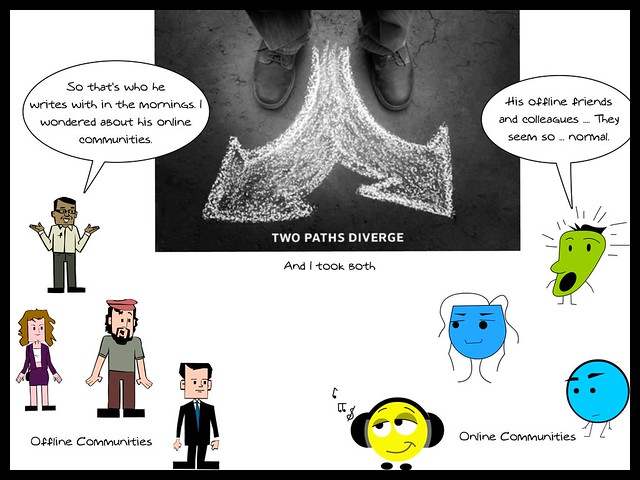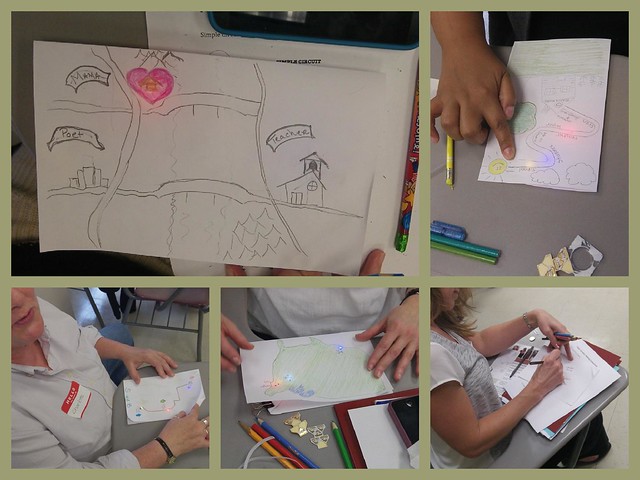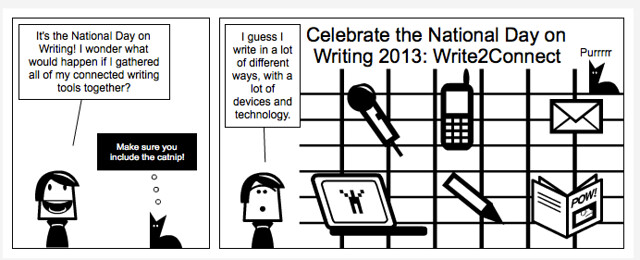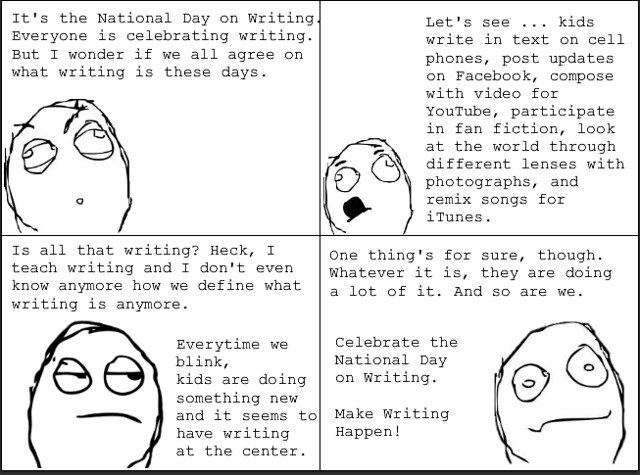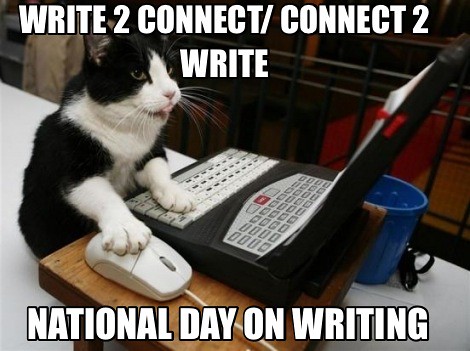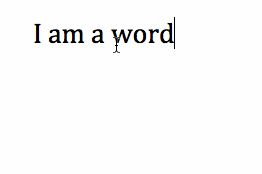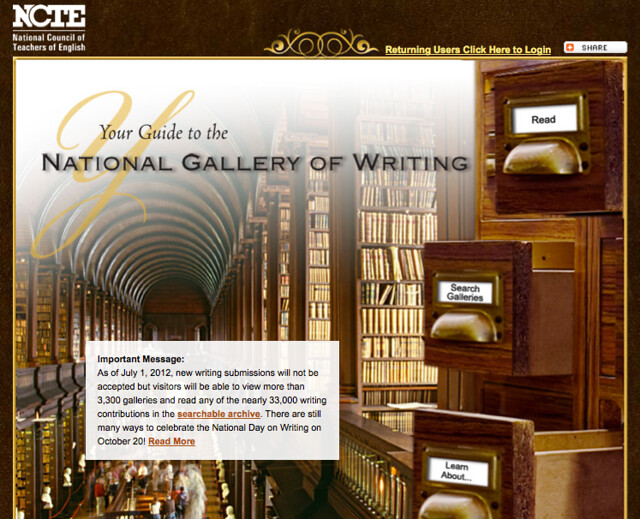
I suppose this was inevitable and not at all unexpected. But the National Council of Teachers of English is closing the virtual doors on the National Gallery of Writing. This online repository of writing (to date, there are more than 33,000 pieces of writing) was established for the first National Day on Writing back in 2009 (seems like a long time ago now). Each year, participants in the National Day of Writing have been encouraged to write and publish in the Gallery as a way to honor the richness of writing. I have writing in there, and networks that I have been part of (including the National Writing Project) have hosted “galleries” in the site over the years. (see my Log of Daily Writing from a few years ago)
But to be frank (and I was part of a small committee at one time thinking of how to re-energize the Gallery), the site was not really built for the times. What I mean by that is that the architecture of the site — from submission to search — was always clunky and difficult/complex to use, and one of the biggest drawbacks was that readers could not leave comments or contribute to writing that was in the Gallery.
Writing became static there. And that is in conflict with all the ways that technology enhances writing. We, the reader, expect to be able to add our thoughts. We anticipate the possibility of the remix. We hope that embedded media works in tandem with the written words. We expect writing to be alive. The Gallery tried to do that but then got stuck in time, I suspect, and NCTE did not have the funds (or did not want to allocate the funds) to upgrade the entire system.
Which is not to say the Gallery of Writing did not have value. It did. It was part of a push by NCTE and companion organizations to honor writing and to show how complex and amazing the writing is that we do. The Gallery may be going silent (I believe it closes down at the end of this month, so if you have writing in there you want to keep, I’d go get it) but the National Day on Writing continues.
On October 21, you can celebrate the National Day on Writing. This year’s theme is “connected writing,” as far as I can determine, which makes a lot of sense, right? I’ll be thinking about how to connect my students as writers this year. What about you?
Peace (in the times gone past),
Kevin

